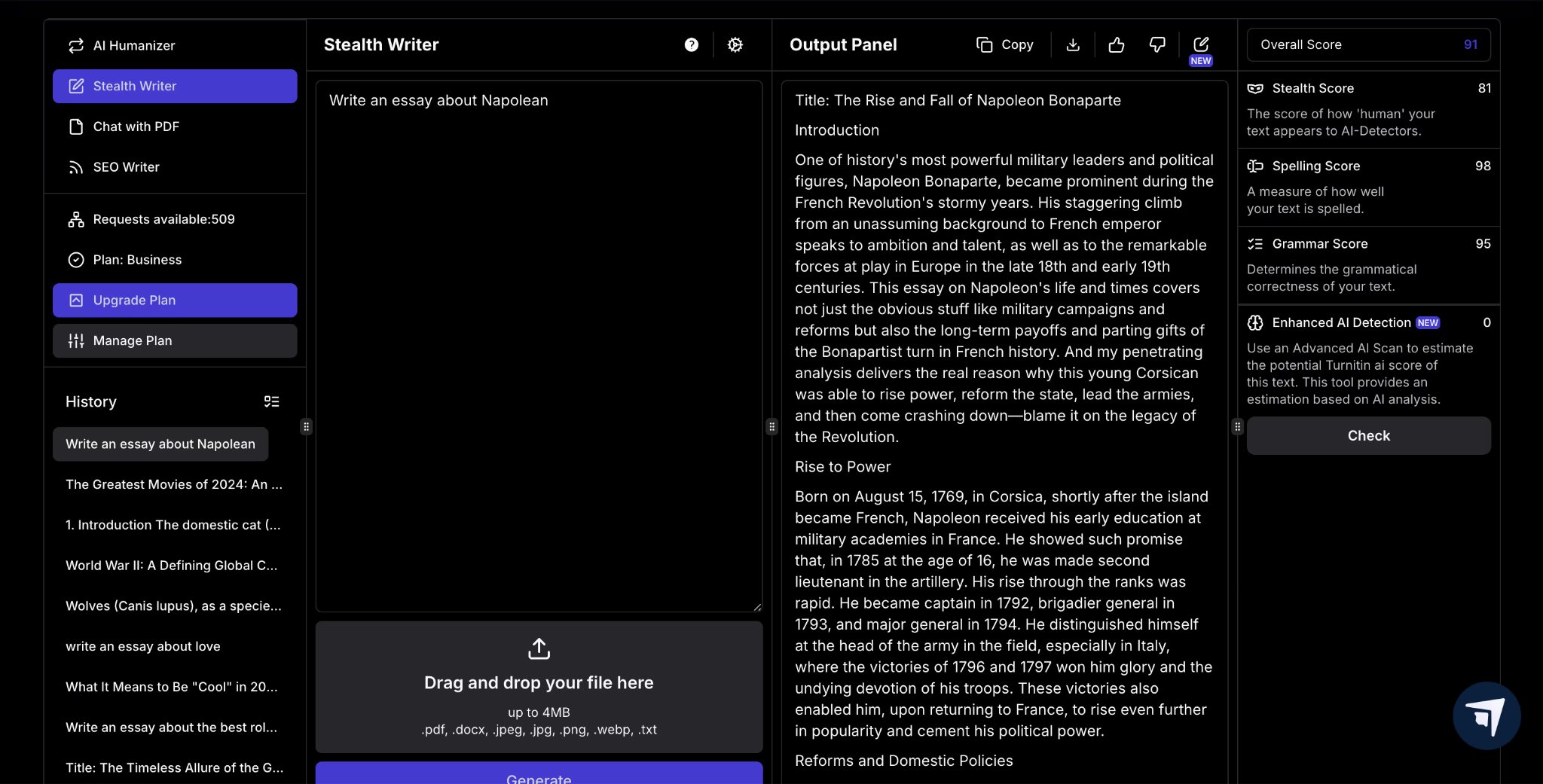Using AI for schoolwork can be a gamble. But, if students manage to keep their AI score at zero, they can easily pass their assignments without any problems.
So, what’s the number a student needs to hit to avoid getting flagged by an AI detector for using AI-generated content?
The target should be zero. Why aim so high? Because any AI trace might prompt college professors or high school teachers to dig deeper. Even if Turnitin marks an essay as zero, a professor could use better AI detection tools and see that essay as entirely AI-written.
In this guide, we’ll explore how to achieve an AI score of zero on AI-written essays and explain why a perfect zero is crucial to avoid any accusations of cheating.
Table of Contents
- Using Generative AI For Schoolwork
- Undetectable AI-Generated Text And AI Detection Tools
- Academic Integrity, Honor Code’s, and AI Usage
- Consequences for AI Use
- Conclusion
Using Generative AI For Schoolwork
Some folks might think using AI to write is lazy, and using ChatGPT for this could be seen that way. The reason is that ChatGPT isn’t designed to copy how humans write.
ChatGPT is built to focus on being clear and exact, which means low complexity and variation. But human writing is more natural, unpredictable, and has varied word choices, sentence structures, and lengths.
If students want to use ChatGPT for their essays, they need to spend time revising to ensure it doesn’t look like AI wrote it.
First, they should check all facts because AI models like ChatGPT can create errors called AI hallucinations, which can be obvious to teachers.
Next, they should rewrite the essay to sound more like how they usually write, using their own words and ideas. These steps can lower the AI detection score, but it might not fully hide the AI writing style.
To avoid being accused of academic misconduct, students wishing to use a chatbot for their essays should look beyond OpenAI and seek out an AI humanizer.
Undetectable AI-Generated Text And AI Detection Tools
Tools known as AI humanizers are designed to take AI-generated text and turn it into something that reads like it’s written by a person. Students who want to submit work that seems like their own might need to use one of these or another similar tool to avoid detection.
To avoid plagiarism checks, using tools that strip away AI markers and add human-like touches is highly effective.
After creating an AI-generated essay that can’t be easily detected, users can run it through an AI detector to see if it’s ready to be submitted.

If a score is above zero, it needs checking. Some services offer tools like Turnitin’s detectors. When users get a zero score from these high-quality tools, they can be sure their text will pass Turnitin’s checks.
Academic Integrity, Honor Code’s, and AI Usage
The rules about academic honesty are shifting right now. With AI writing becoming more common, what’s considered plagiarism now includes AI-related issues. As AI changes how we live, schools will see that these tools aren’t just shortcuts anymore; they’re becoming the norm.
Academia shouldn’t just worry about students losing critical thinking skills by skipping tedious homework. Instead, they should focus on adapting classrooms to use AI’s benefits while still teaching the value of hard work.
Consequences for AI Use
There are many tales about college students facing issues due to AI use. Some have been expelled for using AI on major assignments, while others have been wrongly accused because AI detectors gave false positives.
The whole situation, with students using AI and teachers relying on AI detectors, has led to a climate of distrust that harms learning.
As AI becomes more common, used by business pros and social media influencers, it’s expected that younger people will use these tools.
Schools should shift from punishing students for using new tech to embracing AI, helping them prepare for future changes.
Conclusion
In life, taking shortcuts can often be smart and right, not lazy. Still, if the shortcut involves using AI for school assignments, like in college or high school, students need to understand how strong these AI tools are and learn the steps to avoid detection.
These steps include: using an AI humanizer or another stealthy AI, tweaking the output to feel original, checking facts, and running the final draft through an AI detector.
If the AI detector shows any score over zero, the essay needs more revisions until there’s no sign of AI. This is the only way to ensure AI-generated essays don’t raise suspicion.
